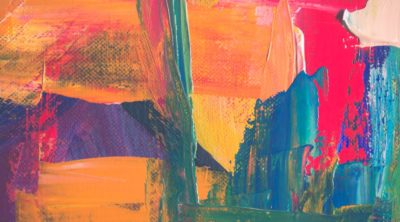
All set to draw a dog with a longer coat, fluffier tail, long fangs, and big, thick claws on paws? ArtHearty apprises you in a step-by-step manner on how to draw a wolf.
Sketching Tip
You’ll end up with an unnatural-looking mess of knotty wire, if you try to draw every hair strand or furry coat as a single pencil line. Instead, try to make feathery pencil strokes to draw the shadows of hair or fur.
A wolf’s body is very similar to that of a dog, as both come from the same ancestors. In cartoons, wolves are generally portrayed grinning, expressing an aggressive look, though those animated creatures can be cute too. But sketching a wolf head (or face) is the most prominent feature when it comes to drawing a wolf―like drawing those perfect eyebrows and producing a furry effect for hair and stuff. Beginners need not worry! We guide you to draw a simple wolf, cartoon wolf, and the face alone with step-by-step instructions.
Prerequisites
Drawing a Simple Wolf
We start with drawing the basic body structure. Draw 3 circles as shown.

Add 2 slightly triangular curves over the head, resembling ears. Connect all the circles, forming his body.

Add the limbs and tail.

Now, it is time to do the detailing to the face. Make those cunning eyes, drooping towards the nose. A little fur creating the effect of actual ears.

Go furry with your drawing. Small zig-zag lines can be used (those we use for creating a lightning effect) around the chest and lower body. Use small, vertical lines to make facial hair and the pelt of the tail.

Erase the pencil geometry.

Color your wolf. Add shades to your wolf figure. Colors can be variations in whites, browns, and blacks. You can use oil pastels or water colors to give your wolf the much-needed furry look!

Making a Cartoon Wolf
Draw a circle. Add pointed, somewhat triangular shapes on the circle, making those popping ears of the wolf. Draw the nose using curves.

Coming to the body, draw a circle below, almost the radius of the wolf’s face for the lower body. Now add a smaller circle in the middle for creating his tummy. Connect all the circles forming his body as shown.

For creating legs, draw four standing lines. Add two semicircles down the lines for the feet. Refer to the image for adding another semicircle for the hind leg foot. Draw an S-shaped tail (you can also make a crescent moon-like structure) for a tail pointing upwards.

Add details to the face. Draw egg-shaped eyes, and add circles within the eye pupils. Draw tiny, curved lines for the eyebrows. Add a curvy triangle (or slightly bigger circle) as the tip of the nose. Draw those sharp wolf fangs with the help of curved lines.

It’s time to make your wolf go furry. Add a few curved strokes on the head, in the chest area and at the tail. Chalk out slanting lines on the feet for separating toes.

Erase unnecessary lines.

Color your cartoon wolf in shades of brown, with the eyes and nose tip being black or darkest brown.

Sketching a Wolf Face
Draw the geometry of the wolf’s face (a smaller circle at the lower end within a bigger circle).

Refine the geometry by adding the wolf’s ears and mouth.

Draw the outline of the nose, and give details to the mouth.

With a free hand, roughly make the eyes, jaws, and the neck part as shown.

Next is to do the fur detailing. For the eyes and nose, use a soft pencil like 6B and strike out the dark details. Put lighter strokes in the direction of the fur on the wolf’s face. Now, use an eraser to give certain highlights to the face, in the same direction as that of the stroked fur.

Erase a few of the original sketch lines. You can use powdered graphite here to shade the drawing. Apply a black tone on the nose and markings, and mid-tones for highlighting and creating a shadow-like texture. Be careful to keep white spaces in the sketch, for giving a furry effect. Of course, you should still be able to make out the original sketch vividly.

Add darker strokes around the ears, and the dark fur on the eyes (resembling eyebrows), using an 8B pencil. Observe the way the fur has been outlined in the image, it’s direction changing from the face to the ruff.

Don’t get disappointed if your wolf sketch didn’t turn out to be the way you fantasized it. Practice is a crucial factor when it comes to sketching. As Karl Lagerfeld rightly quoted, “I never look at my watch when I’m sketching!” Don’t worry about how long it takes; keep practicing, sketching out easy things at first, and later observing and absorbing the details in sketching. We hope this helped. Do tell us if you have simpler ways to draw a wolf.


